The Story of Snow Leopard – Part Four: What Could Have Been
10 October 2013 9 Comments
The Story of Snow Leopard from the beginning was the story of a revolutionary idea that should have been hugely successful. Unfortunately the fates would not allow that and countless hours of devotion to a noble project went to waste. If there is blame, it is not worth dwelling on. Everyone wanted the right outcome. Unfortunately, it was not to be.
Nevertheless, the London staff, pilots and cabin crew worked their mightiest to make this project work, using initiative and self-sacrifice to get over what eventually became an insurmountable problem.
Once the regular schedule was established and operating, the flights still presented a challenge to everyone involved and it goes without saying they were up to it. The Pan Am culture in which the pilots and flight attendants grew up lent itself to innovation and decisiveness in dealing with the everyday issues they confronted while operating Snow Leopard. A case in point is the first trip of Captain Sherman Carr, who encountered his share of challenges during his first trip as Pilot-in-Command on Snow Leopard.
Flying Snow Leopard to Delhi and Back
Captain Carr, who flew the acceptance flight, arrived in London for his first revenue trip and met with the rest of the flight crews at his hotel who briefed him on the operation. He also learned that the flights for the next two months were full, “which was a relief to me as I was anxious for my new employers to succeed”. That evening, he reported with his crew to London’s Heathrow Airport for his trip to Delhi with a short stop in Dushanbe. While completing pre-flight, which included verifying the flight plan, the weather, the fuel load, the passenger load, weight and balance and reviewing the current Notice to Airmen, he learned that the flight was being handled by United Airlines Dispatch in Chicago.
From Captain Carr:
“I reported to the aircraft with my crew and was greeted warmly by the Tajik Air Station Manager and his wife. I briefed the flight service team about our flight time (6 1/2 hours to Dushanbe; 2 1/2 hours to Delhi) and conducted a review of emergency procedures. I checked with catering and baggage handling to ensure things were progressing for an on time departure. All was well. So far.
“The cockpit of a 747 is on the top deck making it difficult to observe the loading progress. So one relies on clues such as all doors closing but one, or the tug getting ready for push-back. As our departure time neared, these things weren’t happening. I could see through the window into the boarding area and saw a huddle of ground personnel talking on cell phones. I contacted flight-ops by radio and found that the United Airlines Dispatch Center had not sent the final weight and balance figures. I said: ‘So what. We have the figures here, we can finish it.’ ‘That’s not the way we do it’, said the United London ops man. We waited at the gate 45 minutes until someone in Chicago sent us our final weight and balance based on the numbers we sent them. I said ‘hmmnnn’ and made a couple of notes.”
The flight was finally cleared and took off for Dushanbe. For Captain Carr, it was “great to be flying again”. The route took Snow Leopard over Belgium, Germany, and Czechoslovakia and across the former Soviet Union. In the flight deck, the pilots were busy with position reports, weather updates and programming the way-points on the route into the Inertial Navigation Systems (INS) on the aircraft. This system directs the flight as it moves along its route. Connected to autopilot, it makes piloting the flight effortless. Except in the former Soviet Union.
From Captain Carr:
“The airways in the USSR were established when airplanes flew about 100 mph with reporting points very close together and in zig zag courses that were established by radio beacons installed along winding roads or rivers that were only accessible by mule or boat. The result was that we found ourselves barely able to stay ahead of the aircraft progress while loading the many way points. We asked the Russian ground controllers if we could fly a straighter route and report every hundred miles or so but this was 1993 and they were still very strict about enforcing their old ways.“
The flight, however, made good progress and was on its way for an on-time arrival. Then there was a problem: Fluid loss in one of the hydraulic systems that required an alternative procedure to lower the landing gear and made the nose wheel steering inoperative. This was “no big whoop” to Captain Carr. These were things pilots were trained to deal with. The landing in Dushanbe was routine and Captain Carr requested a tug to tow the aircraft to the gate.
From Captain Carr:
“’What tug?’ the tower responded. It turns out there was no tug at Dushanbe capable of moving a 747. The book says you can’t taxi a 747 without the # 1 hydraulic system which is the one we lost, but, as an old Navy Pilot used to a carrier aircraft that didn’t have nose wheel steering anyway, we just went back to basics. Using differential brakes and forward thrust on one side and idle reverse on the other we swung right around and taxied up to the terminal. ‘Kharasho’ (‘no problem’). The Dushanbe passengers deplaned and we asked everyone else to stay on board while we examined the situation.”
After examining the landing gear, the source of the leak was identified and capped. Repairs would be done in Delhi. The crew determined that the aircraft could continue to Delhi with the landing gear locked down adding about 45 minutes to the flight plan, arriving in Delhi a little late. Communications in Dushanbe, however, was quite primitive, and after several unsuccessful attempts by the operations office to contact London and Chicago, Captain Carr finally reached Chicago by HF frequency from the aircraft. He explained the situation and got his first taste of United Corporate Culture.
From Captain Carr:
“‘You can’t do that,’ said the United dispatcher in Chicago. ‘We don’t have any such procedure for gear down flights with passengers.’ I explained we had such procedures and that our operating certificate was based on using Pan Am manuals, flight procedures and techniques and the manuals permitted safe operation with the gear down. We had been doing it since the introduction of the first 747. I asked him: ‘Don’t you realize that every flight operates with the gear down at the beginning and end? We were just going to have it down longer.’ He said he didn’t care, he had checked with his bosses and if we attempted to fly with the gear down, they would repossess the aircraft. I had to give the bad news to the local Tajik Air people and two managers from London who were with us. We had to come up with plan B”.
The next problem for Captain Carr was dealing with the passengers still on board going to Delhi. There were no hotels available to put them up overnight. Also, the aircraft heating and electricity was being powered by an on-board auxiliary power unit (APU) that used up fuel and there was no fuel available in Dushanbe. If the APU was kept running, there would not be enough fuel for the flight to Delhi. In addition, the airport was closing and airport personnel were going home.
From Captain Carr:
“The local Tajik Air managers came up with the idea of using one of their Tupolev 154s, which could carry our passengers but not their luggage. The Tupolev crew was called to the airport, their airplane readied, and I was told all we had to do was transfer our passengers to the other aircraft. I learned that wasn’t going to be so easy.
“In London, the BBC had been reporting on the theft of airline baggage. Most of the passengers were Indian Nationals, many of whom carrying as many VCRs, portable TVs and other small appliances as their luggage would bear. When I told them that they would be continuing to Delhi on the Tupolev, but could not take their luggage, there was a near riot. A few began wagging their fingers in my face. I asked the Hindi speaking members of our crew to translate for me so there would be no misunderstanding. I explained there were no hotel rooms, that we had to shut down our aircraft and if they tried to stay, they would freeze to death. I told them we had made arrangements to get them to their destination and their luggage would be arriving the next morning. Their response was underwhelming. To emphasize our security arrangements, I had our guards come aboard the airplane and hold their Kalishnikov machine guns over their heads to show our passengers that their luggage would be well protected. These were not ordinary airport security guards but members of the élite Russian Spetsnaz. I was very glad to see them providing security. And having them behind me to back up my promise to protect the passengers luggage worked very well. Also, no one else wagged a finger in my face.
The Tupolev was brought along side and the passengers began filing from one aircraft to the other in the dark. Once the transfer was complete I went to the Tupolev to meet the cockpit crew and wish our passengers a bon voyage. I introduced myself to the Captain and his crew. We chatted a bit and their Captain smiled and said: ‘Don’t worry Captain, we’ll take good care of your passengers and crew.’ I was grateful for his recognizing my concern and addressing it. I was very impressed. I thanked him, and went though the cabin thanking all the passengers for their cooperation. I also thanked all our flight service team for all their hard work during a difficult time. They were terrific.”
After spending the night at a hotel in Dushanbe, Captain Carr and his crew returned to Dushanbe Airport to find a “pile of papers that truly impressed me” and that “United in Chicago. . .had come to the conclusion” that he was right and released the aircraft for a ferry flight to Delhi with gear down.
From Captain Carr:
“We boarded the airplane and took off. It was a beautiful day and even with the gear down the SP climbed easily to cross the Hindu Kush and surrounding peaks that rose to about 24,000 feet. We were enjoying the scenery as we cruised at 29,000 feet entering Pakistan. We made our position report to the Pakistan air controller who asked us to confirm our country of registration. No one could believe that Tajikistan had a 747. He asked us for our overflight permit number. Before take-off we had received our en-route clearance but no one had said anything about an overflight permit number. I hadn’t heard of this before and in my years of flying with Pan Am, had never been asked for one. The three of us in the cockpit began searching through the paper work. I began reading the controller numbers we found but they were not the number he wanted. He sounded very unhappy and eventually his supervisor radioed: ‘Tajik Air 801, you have entered Pakistani airspace illegally and are directed to land at Lahore Airport immediately.’ I explained that we were a ferry flight because of a mechanical difficulty and that it would be dangerous to divert and could not comply. He said: ‘You must land immediately.’ I again explained that I am using my authority as Captain for the safety of my aircraft and crew to proceed. We only had about 5 more minutes until we were out of Pakistan Airspace. I pushed the throttles up as much as I dared and we kept looking out both sides and hoped that if they scrambled fighters, that they would at least do one fly-by before shooting at us. We reached the Indian/Pakistan border and I thanked the Pakistan air controller for his ‘cooperation’.
“We landed at Delhi and taxied to the gate where I could see the smiling passengers looking out the big windows as they waited to get their luggage. Entering the terminal, I spoke with our Senior Purser and mentioned again how glad I was to have thought of the idea of having the Spetsnaz show off their weapons to assure the passengers that their belongings would be well protected. She said: ‘Oh no Captain. They didn’t get off the plane because they thought your were protecting their luggage. They got off because they thought you were going to shoot them.’ I had wondered why the passengers moved so quickly out of my way as I walked down the ramp.”
Pamir Mountains as seen from Snow Leopard.
Captain Carr and his crew stayed in Delhi for a three day layover, during which Snow Leopard made a London-Karachi rotation through Dushanbe. When Snow Leopard returned to Delhi, he and his crew would take it back to London. At Delhi Airport, he learned that the weather in Dushanbe was “iffy”, adding the requirement of planning a fuel load so that they would be light enough to land in Dushanbe yet have enough to make it to London if they had to bypass Tajikistan. This was resolved by using a “re-dispatch” flight plan that provided for a fuel stop at an alternative airport if necessary.
From Captain Carr:
“We took off on schedule with a full load of passengers, fortunately none bound for Tajikistan, because as we approached Dushanbe, we learned that it was snowing heavily and the runway could not be cleared. We were then informed that we had to deviate north of Azerbaijan due to ‘military activities’. All I could think of was, ‘uh-oh, there goes our fuel and our on-time arrival in London’. The distance from Delhi to London is normally not a problem for a 747SP, but, because we had to limit the amount of fuel we could carry, we had the minimum amount to make it to London and now had to worry about using up our reserves. However, our calculations indicated that we would still have the proper amount of reserve fuel.
“As we progressed west, the weather reports for London kept getting worse. We were advised by Maastricht Control,(Netherlands), that there were delays for aircraft inbound to Heathrow. We had now been airborne for almost nine hours and were getting close to the minimum fuel that would let us safely proceed to our alternate airport. We were told to enter the holding pattern at Lamborne, less than 20 miles from London’s Heathrow Airport. I knew it could take up to an hour or more to cover those last 20 miles. We were flying in ovals on a specific flight path at a specific altitude separated by 1000 feet from the aircraft above and below. We were still at 16,000 feet and since the approach normally is not begun until we have worked our way down through the “stack” to 8,000 feet I knew we were going to be doing this for a while and it was quite possible that we would reach our “bingo” fuel, the minimum amount left for us to proceed to our alternate airport. I excused myself and went aft for a stretch and briefed the senior purser that we might have to divert to Stansted Airport.
“When I returned to the cockpit I was glad to see we had worked our way down to 12,000 feet. We had also been in continuous contact with our Flight Ops to check on Stansted weather. It was okay and the winds were favorable to get there. Nevertheless, I had to tell London Control that we could only make two more turns in the pattern and would then have to divert. At the very last moment, we had worked our way down and were cleared for an approach. The weather had gotten worse and we were faced with zero ceiling and zero visibility, called a ‘zero-zero landing’.
“A 747 can make zero-zero landing if the aircraft and airport are properly equipped, which they were. We committed to making a zero-zero landing, requiring an instrument approach. The aircraft flies where you want it to go with just a caress of the controls. For this landing I decided to make a ‘coupled approach’, on the auto pilot. Even though the autopilot is flying the airplane, the pilot still must follow all the instruments as though flying manually and keep hands on the controls to override just in case. I let the autopilot make the actual touch down and apply the brakes.
“One strange thing about a zero-zero landing is that after you land is when it gets dicey. The trick is to slow the aircraft and keep it on the runway that still can’t be seen. Fortunately, on the runway are ‘center line lights’ embedded in the concrete. But though they are very bright, in low visibility, one can only see a couple at a time and the trick is to run over them with the nose wheel. Otherwise, if one loses sight of the lights, there is no way to tell if the aircraft is to the right or left, other than instinct, until it runs off the runway.
“Once the aircraft was slow enough, we used the “lead-in lights” to our gate. Following the green lights embedded in the taxi ways and stopping when they turn red is all there is to it. Just before the last red stop light, we saw the bricks of the terminal. We had arrived.”
Dushanbe Airport
The flight attendants also had interesting experiences. Vince Rossi recalls making “care” packages from the inbound catering overages for the pilots laying over in Dushanbe. The flight attendants would also set up a buffet for the ground staff and soldiers there. It was a big event whenever Snow Leopard arrived at Dushanbe. According to Rossi, “in spite of the bitter winter cold, there were often people watching from the terminal and nearby the airport”.
There were other interesting aspects of operating through Dushanbe Airport. Capitalism flourished! At the time of the Snow Leopard operation, ground handling was handled by individual “small businesses”, each performing a single function. Thus the baggage handling was a “small business” and the worker was paid directly for his services. This was also the case for the passenger stairs, blocking, fueling, cleaning the aircraft and other air-side activities. One interesting observation was the snow removal operation as described by former Pan Am Purser Gunilla Crawford:
“It was becoming cold and one of our concerns was the lack of de-icing equipment. We were the biggest plane they had ever seen in Dushanbe, and all they had was a three rung ladder and a mop!!!! We questioned the contents of the bucket, and decided it was probably Vodka. The wings they could reach from the left and right “3” doors inside the plane, but the tail was another issue. It was just way too high.”
Soon, a cherry-picker appeared to take care of the tail, and it, too, was a small business that was paid directly for its services.
Snowbound Dushanbe Airport
Layovers in Exotic Places
One of the attractions of working for an international airline is the opportunity to visit countries all over the world and explore them during layovers. Layovers are necessary to ensure flight crew members are not “timed out” and are well rested for their next segment.
In the case of Tajik Air, most layovers were in Delhi, where the hotels were plentiful and there were places to visit. Except, of course, when there is a major holiday and the hotels are fully booked. This happened to Gunilla Crawford and her crew:
“We got to Delhi and decided to go to a hotel in the airport area, but every hotel was full. We agreed that we had indeed a hotel at the airport ourselves, our plane. 9 bathrooms, 3 galleys and plenty of seats, [and] in First Class the seats reclined pretty flat. For three days we stayed, parked in this cargo area, ordered food, walked on the tarmac for exercise and read books. “
Dushanbe was not considered a layover city, but there were times that a layover was necessary due to operational circumstances. For the most part, due to the political situation in Tajikistan, the flight attendants kindly declined the opportunity to sample Dushanbe. The pilots, however, did. Captain Carr’s first layover was the over-nighter, caused by the landing gear problem. This was his first experience in a former Soviet Republic.
From Captain Carr:
“We watched the Tupolev taxi out and take off, secured our plane, set our departure for about 10 a.m. the next morning, waved goodbye to the guards and got on our bus to the hotel. As tired as I was, I was now looking forward to actually being in Dushanbe. Some of the Spetsnaz came with us on the bus and explained that we would be traveling after curfew and the roads were not necessarily free of problems. Problems? I didn’t ask what problems. I was cool. Speaking of cool, the bus was very similar to an American school bus circa 1950 and if it was +10 F outside the bus, it was -10 inside. We finally made it to the hotel and I was greatly relieved to see that it looked very nice. This was my first USSR hotel. We were greeted by a giant fellow in a caftan of sorts wearing a beautifully decorated hat that was a cross between a fez and a skull-cap. I didn’t know whether to bow to him or shake his hand but he resolved this by taking our luggage. He was the combination bell man , guard and lobby bouncer. We were told the hotel was full but they would make some rooms available for us. I have never liked giving up my passport at a hotel desk but even though we were crew-members and accompanied by the Tajik Air Dushanbe Station Manager, we were told: ‘no passport, no room.’ I gave up my passport. I asked if we could get something to eat. ‘Breakfast’ was the answer. ‘Now?’ I asked, ‘Morning. No food now.’ We received keys to our rooms and proceeded up in an elevator to our floor. I mentioned that the hotel looked nice from the outside. My first impression was that it may have also looked nice on the inside but I wasn’t absolutely sure because it was so dark.”
The next time Captain Carr visited Dushanbe, he had a chance to have a better view of Dushanbe. This was a city that was affected by the then ongoing civil war and things were quite unstable. The country was struggling and its economy was to say the least, precarious.
From Captain Carr:
“My next layover in Dushanbe gave me another jolt of realism. We made arrangements with the Station Manager to take a tour of the Dushanbe area. He was able to provide the same bus that took us to and from the hotel. We drove through some areas with some very grand government buildings with surprisingly attractive architecture. We stopped at a beautiful park with some magnificent statuary. It didn’t take us too long to realize though that something was wrong. No people on the streets. No cars on the roads. The only other humans we saw on our drive were local policemen who stopped our bus, asked for our identification, and extracted a small ‘toll’ for passing through their section of road. I don’t believe they received much else in the way of pay. We headed back to the area of our hotel and stopped at a ‘super market.’ It was quite a large store, larger than most in the U.S. but dramatically different. The shelves were all bare except for one corner of the store where a man dispensed potatoes into burlap bags with a shovel. This was the government store. We did finally find a ‘people’s market’ with fresh vegetables and other marketable foods and goods. We were able to buy some tasty snacks and food to carry us through the evening curfew. I also made my one big purchase of a local item that is my one souvenir of my Tajikistan experience.
“On flights, we were all wearing our old Pan Am uniforms without the Pan Am insignia or hats. I thought it would be nice to have a hat with an emblem indicative of Tajikistan. I found the perfect thing on a peddlers cart. It was a pin-on gold medallion of a beautifully crafted snow leopard. I happily purchased it, stuck it on my beret, and it was my contribution to uniform design and a personal trademark thereafter. I took a little kidding at first but then all the other crew-members wanted one as well.
“The next day, the Engineer, First Officer and I decided to walk over to explore another hotel that we had noticed not too far away. The hotel seemed very attractive from the outside. The lobby was very dark and deserted but after we rang a little bell on the main desk, a clerk eventually appeared. I asked if we could look around and see their rooms. ‘Da’. He pointed to a doorway with a flight of stairs. We went up and came to what appeared to be an airport style security check point with a walk-through metal detector and guards with Kalishnikov machine guns. After we got through we ran into a fellow on the upper landing that seemed to be an American. He asked if he could help us and I explained that we were looking for a better hotel and were hoping to see what the rooms were like here. He said: ‘Sure.’ He told us his name was Stan and we followed him into what appeared to be a suite of 10 or 12 rooms that had its own pantry and kitchen. He invited us to the suite’s lounge and offered chips, dip, and sodas. We explained that we were the crew for the new Tajik airline’s 747. As we were sitting in the lounge, I finally noticed a big emblem on the wall that read ‘U.S. Embassy’. I asked,’Is this the U. S. Embassy?’ ‘Yes.’ ‘Do you work here?’ ‘Yes.’ ‘What do you do?’ ‘I’m the Ambassador.’ Stan, the Ambassador, and his charming wife entertained us for the next hour or so as we swapped stories and local intelligence. I asked him about the information I had gotten about local war lords and border positions. He confirmed most of it. The border fighting that was supposedly 150 miles away was now only 80 miles from the city. He explained that he kept a C-130 Hercules airplane on standby 24 hours a day in case it became necessary to evacuate the embassy staff.
“That night, the aircraft we were scheduled to fly to Karachi and back overflew Dushanbe because of bad weather. The weather stayed bad and it overflew us again on the way back to London. We were stuck here for another 48 hours. My most immediate concern was to call my wife Mary because she was going to meet me in London. Since I obviously wasn’t going to be back in London in time to meet her, I put in the two-hour-to-wait call through Moscow and was relieved when I finally got through and told her to wait two days and come on the next Tajik Air flight out of London. She would then spend one day with me in Dushanbe and we would continue together to New Delhi, Agra and the Taj Mahal.
“Two things I hadn’t counted on happened. The airplane had to overfly one more time and there was a fire fight near our hotel between Russian tanks and rebels with Kalishnikovs and mortars. The rapid fire of modern machine guns is really something. The Russians were using the most modern Gatling gun type that sounded more like an air hose used to clean machine parts except instead of air, it was putting out steel projectiles at a ‘zillion’ per second. Everything was snow covered so the sounds of the skirmish were eerily muffled. The rebels would fire their Kalishnikovs, and the Russians would answer. I called Mary and told her to stay home.”
The Last Layover
As the flights continued it was quickly becoming clear that the operation was encountering some severe financial problems and getting the flight successfully off was becoming a day-to-day affair. In addition, there was a mechanical problem with one of the aircraft’s engines and it was taken out of service. Eventually Snow Leopard was repossessed by United Airlines. Gunilla Crawford and her crew were on the last rotation. They were in Delhi when the aircraft was repossessed.
From Gunilla Crawford:
“We arrived in New Delhi on a regular flight, and checked in at the Sheraton where we stayed as Pan Am crew. A couple of days later as we are getting ready to take the inbound flight back to London, our Captain informed us that there is a delay. I believe the message read ‘buy more beer’ or something to that effect.
“We sat by the pool and eventually it became clear that the plane had been impounded and our adventure probably over. It had lasted a little over 4 months. Our Station Manager was stuck with some 500-700 hundred passengers who had booked flights to London. He counted on the crew as pawns for money from London, as we could not leave and our crew visas would run out. We knew how to quietly go to the authorities and extend the visas without his knowledge. The Station Manager’s assistant was helpful. We did not want the hotel to know the dilemma, after all the company was to pay for our rooms. We asked Vince who was in London to fax an explanation to our situation, in Spanish, so the hotel would not find out. They didn’t and we got the information we wanted. Time to plan our ‘escape’.

The crew wai ting in Delhi.
ting in Delhi.
“The problem was to book a flight, we had to buy the tickets right away and not at the airport when we left. Through a friend in Miami, who was a travel agent and who made a few phone calls, we were booked on Air France to Paris with a connection to London and we were able to pay the morning of the departure. Our Captain footed the bill on his credit card!! An incredible man! On the morning we left we all came down to the lobby, paid our incidentals and went to the airport. We felt an urge to quickly get through security and immigration, and I remember looking around, like the others, to see if the Station Manager would come running to stop us. He didn’t, and we were back in London several hours later.”
Vince Rossi was in London at the time of the repossession of Snow Leopard. He wanted to provide as much information as possible to the Delhi crew without compromising them given the financial situation. He did this by sending information by fax, written in Spanish. In addition, there were Tajik flight attendants laying over in London. They were faced with a different problem.
From Vince Rossi:
“The Tajik crew laying over in LHR had purchased MANY frozen chickens to bring home. When it became clear we were not flying that night and it was likely we would not ever fly again, the Tajik flight attendants approached me and expressed concern about the chickens defrosting. It is highly unlikely that the front desk manager from the Sheraton Skyline had ever received the request I was to make. I approached the front desk and asked for a substantial space in the hotel’s kitchen freezer to store quite a large number of frozen chickens. The chickens remained there frozen until the Embassy of Tajikistan arranged for transport of the Tajik crews and the frozen chickens back to Dushanbe some time later.”
Gunilla Crawford remained in London for a short while, hoping that the affair was “just a hiccup, and all would be solved in due time.” After a few days the sad truth settled in that it was all over and “maybe it had never meant to be more than what it was.”
Who would have thought that a remote country in the former Soviet Union would have a Boeing 747 operation linking it with the West? It actually happened – and it could have continued but for fate. The timing was just not perfect for starting such an operation. The infrastructure within Tajikistan’s Civil Aviation Authority had not matured enough to take on the financial and political burden of a complex Sixth Freedom operation, requiring bilateral agreements not only with the United Kingdom, but with India and Pakistan as well. Thanks to the London management, the UK agreement and slots at Heathrow were secured. Unfortunately, the negotiations to secure the agreements with India were still incomplete when the operation started and that presented barriers and resultant revenue losses. Had the start of the operation been delayed until the negotiations were completed there might have been a different result. That will never be known. However, the Snow Leopard operation proved that it could be done, and for four short months, Snow Leopard proudly flew the skies between London, Dushanbe and Delhi/Karachi.
The gold Snow Leopard medallion is still proudly mounted on Captain Carr’s beret.
THE END
Acknowledgements:
Writing this story would not have been possible without the contributions of those Pan Am pilots and flight attendants who were so willing to share their experiences. I would like to personally thank former Pan Am Captain Sherman Carr whose story about his experiences with Snow Leopard played a major part in this story (and the operation) and also former Pan Am Pursers Gunilla Crawford and Vince Rossi. I would also like to thank Ben Daneshmand with whom I worked in London and also for his recollections of the story he shared with me.
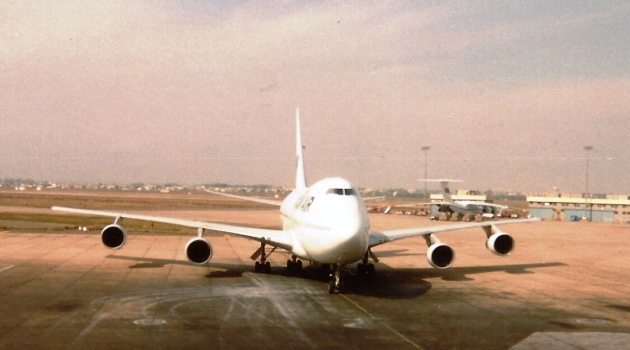






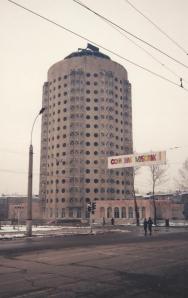


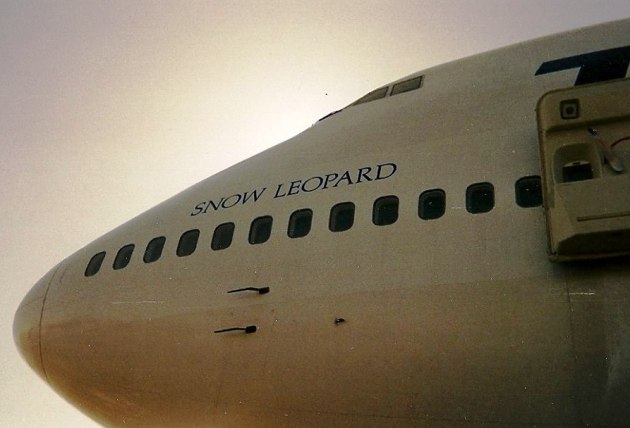
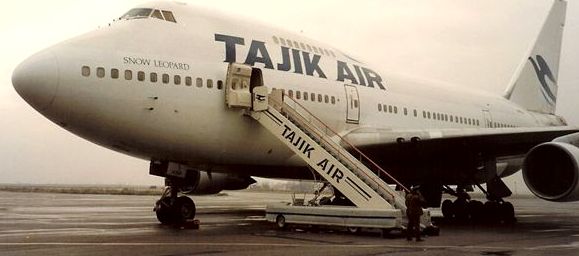
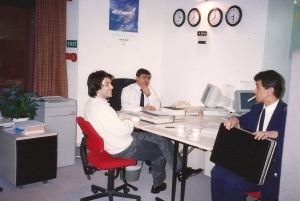

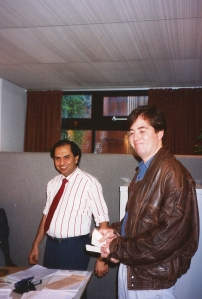
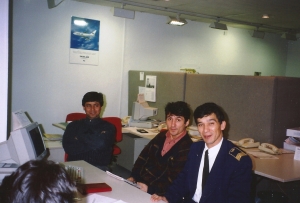
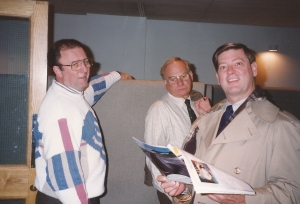
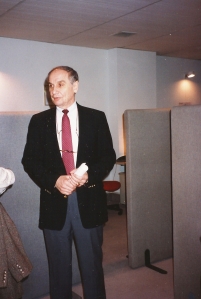
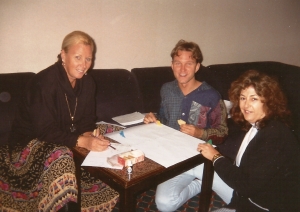
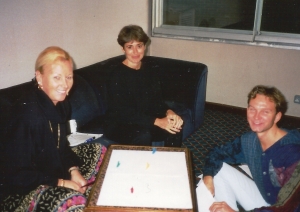
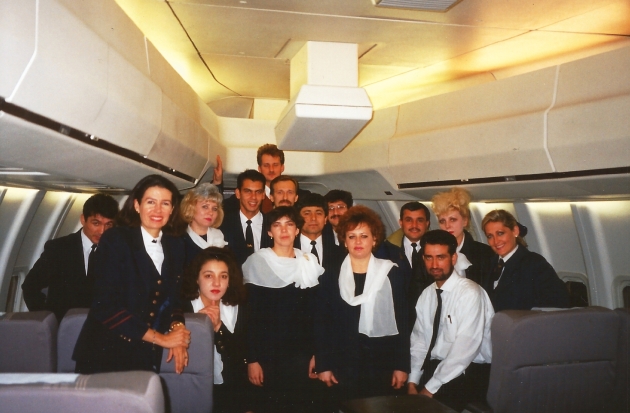
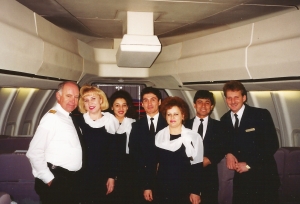
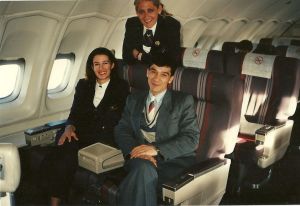
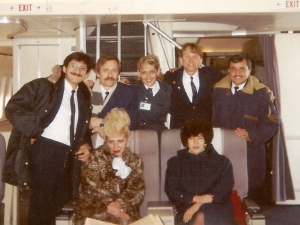
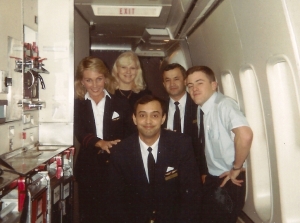
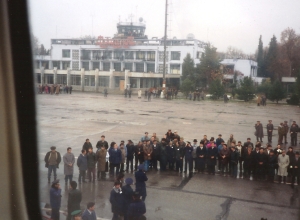
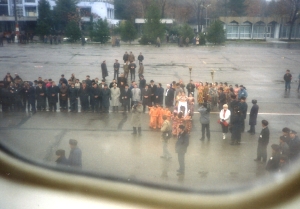


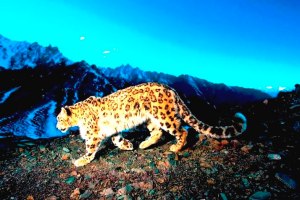

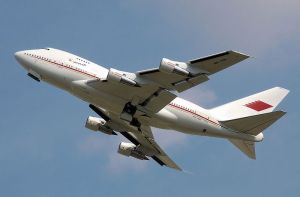

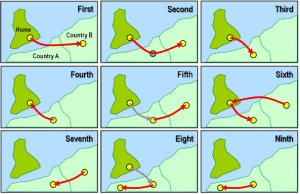




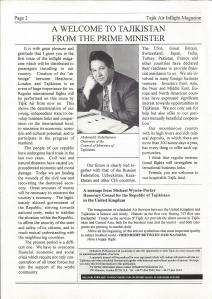

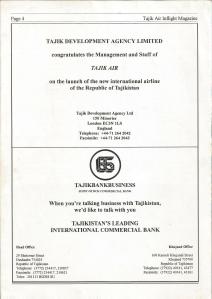
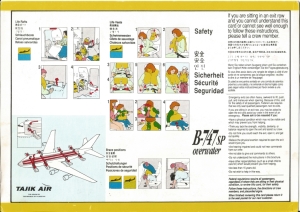

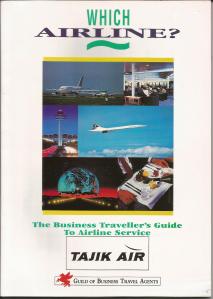


Recent Comments